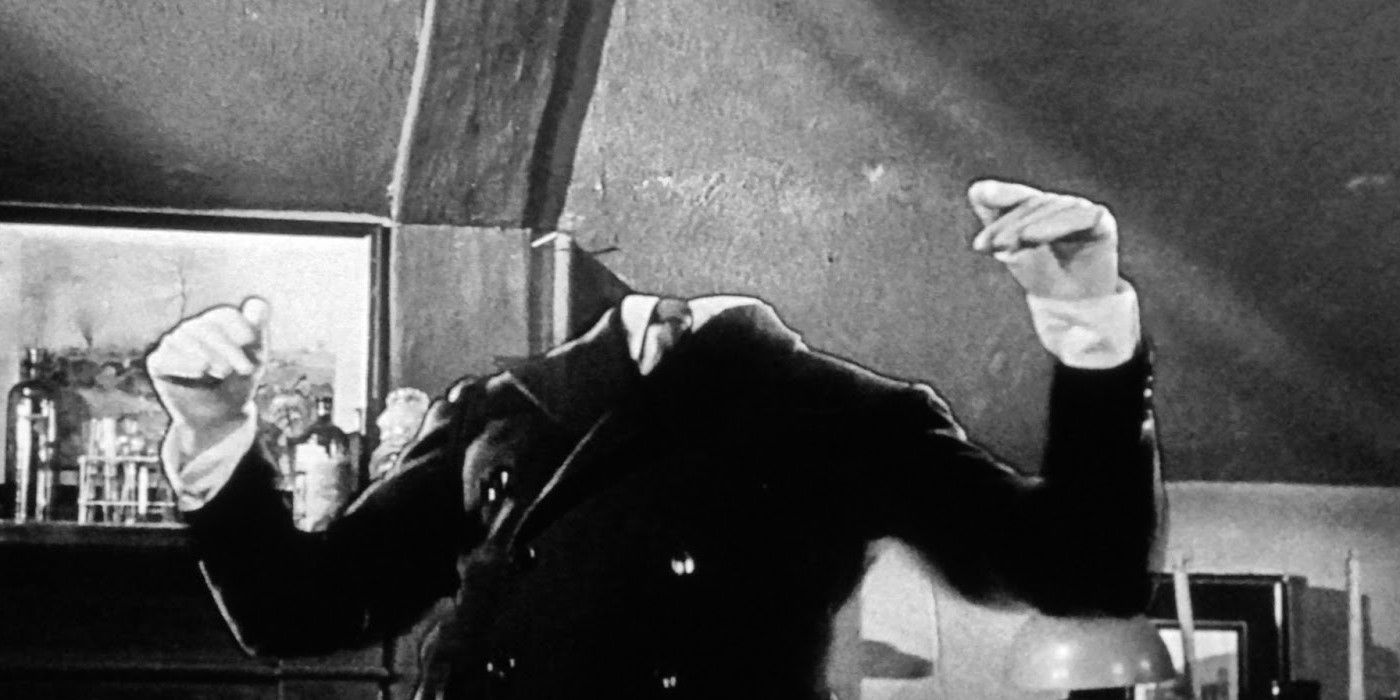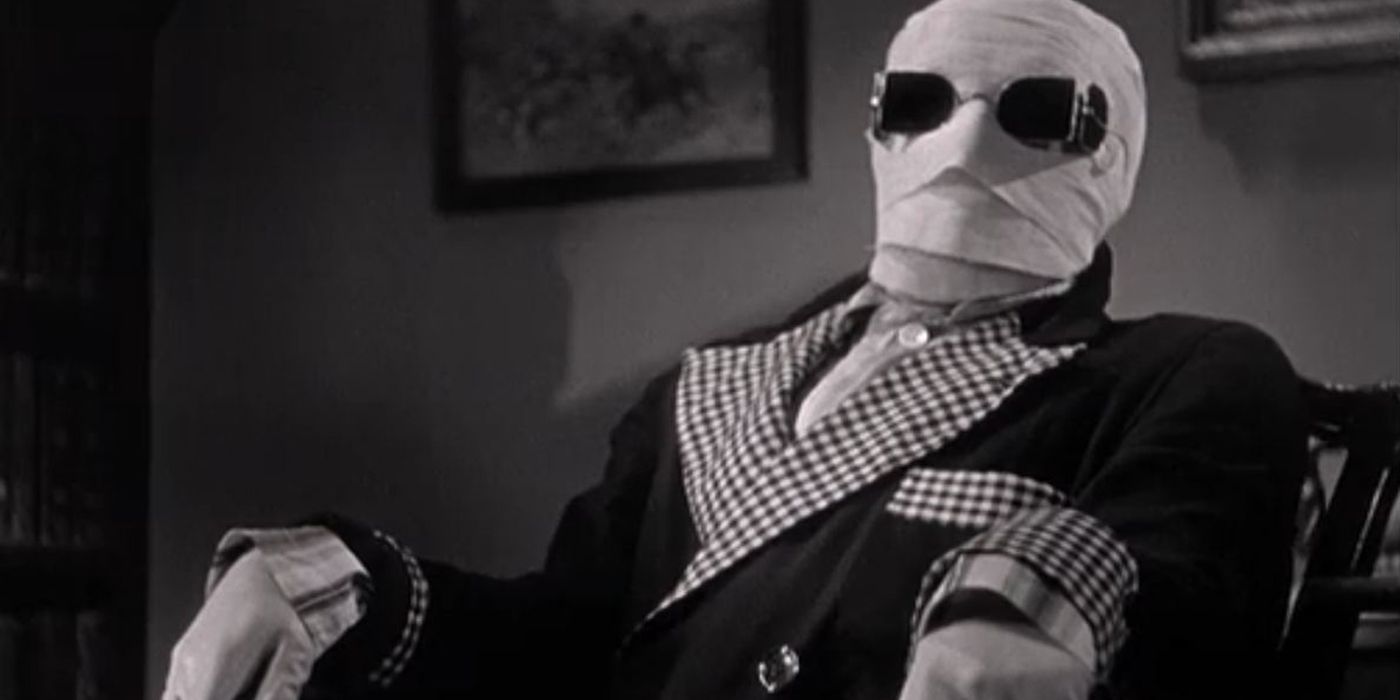The Universal Classic Monsters have been known for many firsts, even though they never officially got the credit they deserved. For example, these films helped lay the groundwork for a cinematic universe long before it became a common studio strategy. But regarding camera work and special effects, the Universal Classic Monsters also set the stage for what would later be standard practices in the genre. One of the best examples of this can be seen in the unsuspecting yet groundbreaking 1933 film, The Invisible Man.
The Invisible Man followed an unlucky scientist who had finally mastered the key to invisibility. But for all of his success, he was destined to suffer, as he had no way of reversing the effects of his serum. Instead, his mind slowly became fractured, and he eventually became a menace to a small town, taking over 100 lives in the process. Most of the film showed the titular protagonist in bandages to hide his truly transparent self. But for the moments where he had to be half visible and half invisible, the documentary The Invisible Man - Revealed! showed how advanced filmmaking was and how his character set the stage for the modern green screen.
Throughout the film, there are multiple instances where The Invisible Man had to be present as just a floating set of clothes. To bring this to life, special effects artist John P. Fulton spearheaded the project and established clever camera tricks to show instances of a man wearing clothes without a body. The documentary explained that the practice was a clever use of black velvet that the actor would wear over the parts that had to remain invisible. This would then be photographed over a black velvet backdrop, and the real backdrop would fill in the gaps. The finished product would result in a man who was there but not there at the same time.
One of the best examples of this came when actor Claude Rains had to remove his bandages in front of a mirror to unveil his true self. To accomplish this, the same scene had to be filmed four times. According to Fulton, the actor had to be filmed taking off his bandages with a black background; then, his reflection had to be filmed separately. After that, the mirror had to be filmed along with the set without the actor. When placed together, it would give the appearance that he was actually removing his bandages to reveal nothing.
These techniques would later help bring to life the film's reimagining, where instead of black screens and multiple shots, The Invisible Man would be entirely green-suited and removed on a computer. However, if it weren't for what was accomplished in the original film, special effects likely wouldn't have grown into the juggernaut it is today. So while it may not be the most iconic, it's likely that even with Universal Studios' other successful franchises, The Invisible Man is its biggest contribution to the medium.
Since then, Universal Classic Monsters have earned a reputation of being ahead of their time, and rightfully so. From their narrative themes to the special effects of these films, the classic monsters have offered just as much professional input as they have to the horror genre. But in the case of The Invisible Man, this unique science-fiction horror film may have peeked into the future and used its skill to lay the groundwork for more advanced films nearly a century later, all thanks to the works of John P. Fulton and others like him.










Gloss